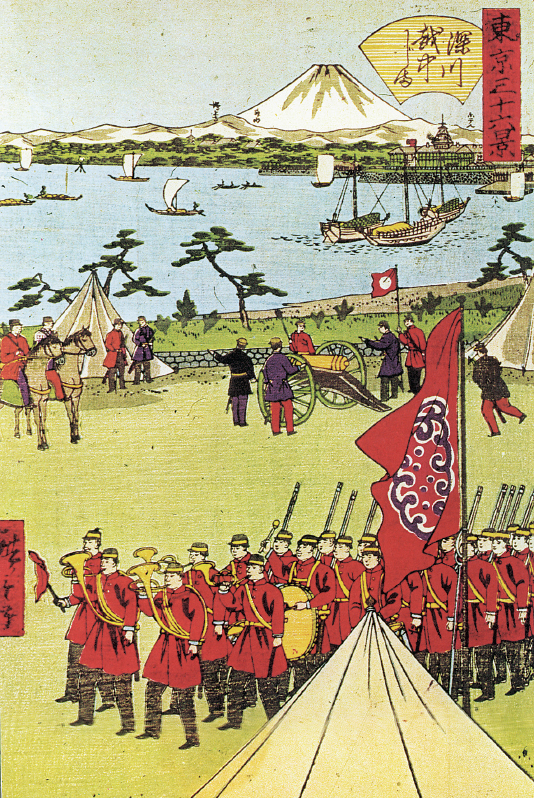Understanding Western Society
Printed Page 766
The Example of Japan
When Commodore Matthew Perry arrived in Tokyo in 1853, Japan was a complex feudal society. At the top stood a figurehead emperor, but real power was in the hands of a hereditary military governor, the shogun, who ruled with the help of a warrior nobility known as samurai. The intensely proud samurai were humiliated by the sudden American intrusion and the unequal treaties with Western countries that followed.
When foreign diplomats and merchants began to settle in Yokohama, radical samurai reacted with a wave of antiforeign terrorism and antigovernment assassinations that lasted from 1858 to 1863. In response, an allied fleet of American, British, Dutch, and French warships demolished key forts, further weakening the power and prestige of the shogun’s government. Then in 1867, a coalition led by patriotic samurai seized control of the government and restored the political power of the emperor in the Meiji Restoration.
The immediate goal of the new government was to meet the foreign threat. Yet how was this to be accomplished? In a remarkable about-
In 1871, the new leaders abolished the old feudal structure of aristocratic, decentralized government and formed a strong unified state. They declared social equality; decreed freedom of travel; and created a free, competitive, government-
Yet the overriding concern of Japan’s political leadership was always to maintain a powerful state and a strong military. State leaders created a powerful modern navy and completely reorganized the army along European lines. In addition, Japan skillfully adapted the West’s science and technology, particularly in industry, medicine, and education, and many Japanese studied abroad. The government paid large salaries to attract foreign experts, who were replaced by trained Japanese as soon as possible.
By 1890, when the new state was firmly established, the wholesale borrowing of the early restoration had given way to a more selective emphasis on those things foreign that were in keeping with Japanese tradition. Following the model of the German Empire, Japan established an authoritarian constitution and rejected democracy.
Japan also successfully copied the imperialism of Western society. Expansion proved that Japan was strong and cemented the nation together in a great mission. Having “opened” Korea with its own gunboat diplomacy in 1876, Japan decisively defeated China in a war over Korea in 1894 and 1895 and took Formosa (modern-
Japan became the first non-
